
5GAA Study | The cost-benefit analysis on cellular vehicle-to-everything (C-V2X) technology and its evolution to 5G-V2X
This report, authored by independent telecoms, media and technology consultants Analysys Mason together with automotive consultancy SBD Automotive, assesses the benefits of cellular vehicle to everything (C‑V2X) technology for delivery of vehicle-to-everything (V2X) communication. The report, which has a focus on the benefits of such solutions in Europe, uses qualitative evidence, and describes quantitative cost–benefit analysis that the consultants have undertaken, relating to deployment of C‑V2X.
The purpose of the study has been to examine qualitative evidence and perform quantitative analysis, regarding the net benefits of C‑V2X. Quantitative analysis is focused on the European market, where the European Commission (EC) is currently undertaking a public consultation on the deployment of cooperative intelligent transport systems (C‑ITS).
Read the full study here.
As part of this study, primary research has been conducted to elicit views from the mobile and automotive industries on the benefits of C‑V2X. One-to-one interviews with companies involved in the 5GAA were held, in order to identify several key benefits, as summarised in Figure 1.1 below.
A snippet from the report featuring the benefits of C-V2X [Source: Analysys Mason, 2017]


An assessment of LTE-V2X (PC5) and 802.11p direct communications technologies for improved road safety in the EU
This report by the 5G Automotive Alliance (5GAA) presents a quantitative analysis of the ability of Cooperative Intelligent Transport Systems using short-range ad hoc/direct communications to reduce the number of fatalities/serious injuries caused by motoring accidents in the EU. In this context, the study estimates the number of accidents avoided over time through the use of two short-range wireless technologies, 3GPP LTE-V2X (PC5) and IEEE 802.11p, examining their respective performance and projected take-up among road users. The modelling underlying this report has been peer-reviewed and validated by the technology and policy consultancy, Ricardo.
Specifically, two standardised C-ITS short-range technologies are compared for the purposes of this report, namely 3GPP LTE-V2X PC5 (also known as LTE side-link) and IEEE 802.11p (also known as DSRC or ITS-G5), both operating in the 5.9 GHz band for the provision of direct communications between road users. It should be noted that additional reductions in the number of fatalities and serious injuries are possible via longer-range C-ITS communications enabled through interactions with a LTE cellular network, but that these are not considered in this report. Hence, the analysis is limited to LTE-V2X (PC5) only, in comparison to 802.11p.
This study examines and compares two independent counter-factual scenarios: one where LTE-V2X (PC5) is the only deployed C-ITS technology, and the other where 802.11p is the only deployed C-ITS technology.
We consider, as a baseline, the existing and future projected statistics for road traffic fatalities and serious injuries in the EU. We then evaluate the reduction in the number of fatalities and serious injuries which may occur as a result of C-ITS direct communications between road users, by modelling:
- The expected take-up (penetration) of LTE-V2X (PC5) and 802.11p among road users in the EU over time (including vehicles, motorcycles, bicycles and pedestrians), and
- the radio link performance of LTE-V2X (PC5) and 802.11p in successfully delivering actionable warning messages between road users in a number of collision scenarios.
We identify the following conclusions and recommendations from the results of this report:
- The study indicates that LTE-V2X (PC5) outperforms 802.11p in reducing fatalities and serious injuries on the EU’s roads. This is due to a combination of the superior performance of LTE-V2X (PC5) at the radio link level for ad hoc/direct communications between road users, and the market led conditions which better favour the deployment of LTE-V2X in vehicles and in smartphones, and include a clear evolutionary path towards 5G-V2X. For these reasons, it is essential that EU regulations remain technology neutral and do not hinder the deployment of LTE-V2X (PC5) in favour of 802.11p for the provision of direct communications among vehicles and between vehicles and vulnerable road users.
- An absence of interoperability at radio link level between LTE-V2X (PC5) and 802.11p is unlikely to present a substantive barrier to the reduction of road accidents in the EU in the short to medium term. The relatively low penetration of C-ITS technologies in vehicles in the first half of the next decade (and perhaps even later) means that a vehicle equipped with LTE-V2X (PC5) or 802.11p is far more likely to collide with a vehicle that is not equipped with C-ITS technologies at all – indeed it is not until the middle of the next decade that penetration rates are expected to reach a level which results in significant impacts on accident rates. Any regulations which mandate LTE-V2X (PC5) to be backward interoperable with 802.11p will therefore have only a limited effect in the early years of deployment pre-2025. Such regulations may run the risk of unnecessarily distorting the market in favour of 802.11p, thereby obstructing the adoption of LTE-V2X (PC5) and resulting in greater road fatalities and injuries in the longer term.
Read the full study here.

Interactive Session – Bridging Commercial & Societal Transport Digitisation Strategies (5GAA)
In this interactive session, participants will be invited to exchange around Road Authorities and Operators’ objectives and expectations towards OEMs and Communication Services Providers to deploy I2V and V2I services.
Participants will be distributed in thematic sub-groups focused on a specific road environment to foster interactions around the respective pain points and priority V2I services that could address these.
The outcome of the discussions will feed 5GAA’s “BRIDGE” Work Item, which aims at providing a ‘Playbook’ type report for Road Operators MNOs, OEMs can refer to when aiming to enter into some form of collaborative partnership or business arrangement alongside their own pre-existing business objectives.
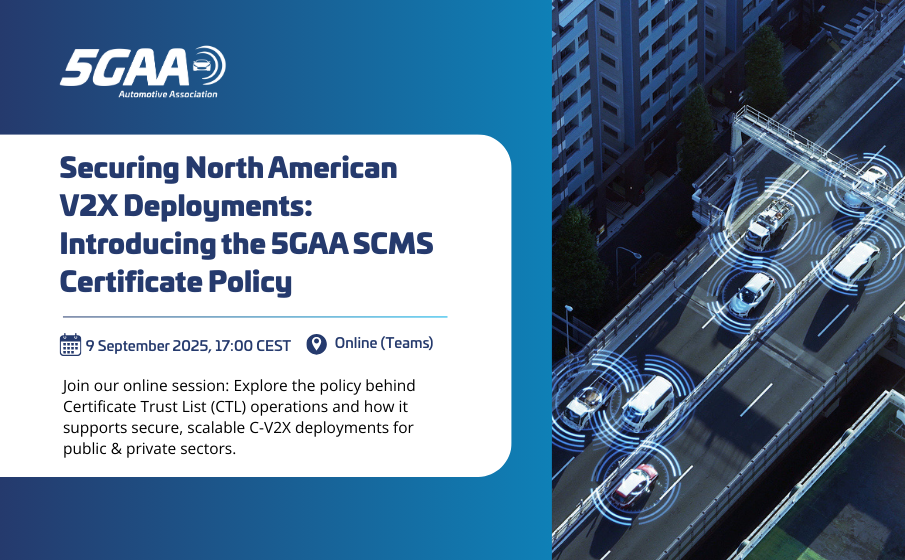
5GAA Online Session: Securing North American V2X Deployments: Introducing the 5GAA SCMS Certificate Policy
The 5G Automotive Association is organising the online session “Securing North American V2X Deployments: Introducing the 5GAA SCMS Certificate Policy”.
- Date & Time: Tuesday, 9 September 2025
- Location: 8:00 am PT / 11:00 am EDT / 5:00 pm CEST
As connected vehicle and smart transportation deployments begin to take shape across the US and Canada, trust and security in C-V2X communications are becoming foundational to enabling a wide range of applications.
Experts from 5GAA, BMW Group, Qualcomm, and Microsec V2X PKI Inc. are joining this online session to present:
- How C-V2X communications can enhance road safety, support connected and automated mobility, and enable future transportation services, including the critical role of security in ensuring these capabilities function.
- The technical architecture and operational model of SCMS Certificate Policy, and how the policy enables secure V2I message exchange across public and private deployments, facilitates cross-OEM interoperability, and fosters a competitive ecosystem of SCMS providers and vehicle platforms.
If you are interested, you can register here.
Meet the Speakers
- Joachim Göthel, Senior Manager E/E-Systems & 5G Alliance, BMW Group, & Founding Board Member, 5GAA
- William Whyte, Senior Director, Technical Standards, Qualcomm
- Peter Lorinczy, Technical Solutions Lead, Microsec V2X PKI Inc.
Agenda
- Opening Remarks: BMW Perspective on V2X Momentum and Security Foundations (Joachim Göthel)
- Technical Deep Dive: SCMS Certificate Policy, Interoperability and Ecosystem Enablement (William Whyte & Peter Lorinczy)
- Q&A
Motivations for C-V2X include augmenting automated vehicles with non-line-of-sight awareness and cooperative intention sharing, supporting V2X-based tolling over the 5.9 GHz ITS spectrum, enhancing road safety and protection of vulnerable road users (VRUs), and improving traffic efficiency. V2X messages—such as Basic Safety Messages (BSMs), Signal Phase and Timing (SPaT), and Cooperative Perception Messages (CPMs)—require robust security to ensure message integrity and authenticity.
These messages unlock a variety of use cases that depend on trusted and anonymous communications between vehicles, infrastructure, and other road users.
To support these needs, 5GAA has released its SCMS Certificate Policy, a set of rules tailored to the North American ecosystem. Developed by 5GAA Working Group 7 on Cybersecurity, the policy reflects input from automakers, suppliers, semiconductor leaders, PKI providers, telecom infrastructure vendors, and broader industry stakeholders—including feedback from transportation agencies and industry organisations.
Whether you are a policymaker, technology developer, or part of the transportation ecosystem, this is your opportunity to connect with these industry leaders and better understand the security foundations of North American C-V2X deployments.
For more information, please contact marcom@5gaa.org
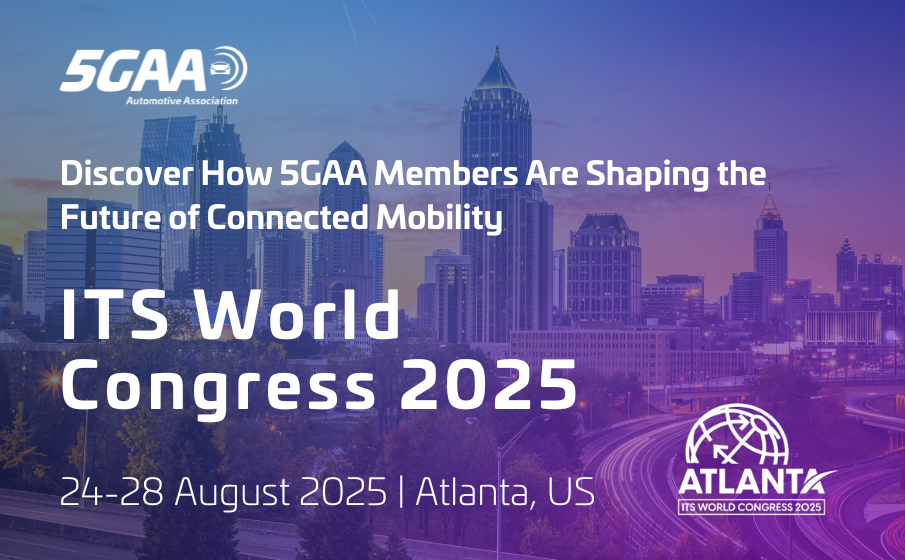
5GAA Members at ITS World Congress Atlanta: Advancing C-V2X for Safer, Smarter, and Greener Mobility
5GAA is proud to celebrate its members’ achievements, which will be on full display at the ITS World Congress in Atlanta this August. From cutting-edge innovations to the deployment of mature intelligent transport systems for connected mobility, more than 20 5GAA member companies will participate, showcasing both individual and joint efforts that demonstrate the readiness of C-V2X solutions for large-scale deployment.
C-V2X uniquely combines direct vehicle-to-vehicle and network-based communication, enabling real-time information sharing between vehicles, infrastructure, pedestrians, and the cloud. This dual capability is critical to improving safety, reducing traffic congestion, and enhancing mobility system efficiency.
Download our brochure to discover everything our members are showcasing and how they are contributing to the programme at ITS World Congress Atlanta. Thank you to our members for participating:
AT&T Connected Solutions, Audi, Ericsson, Qualcomm, Verizon, Bosch, DENSO Corporation, HARMAN Automotive, LG Electronics, Applied Information, Cohda Wireless, Commsignia, Ettifos, Honda Motor, INTEGRITY Security Services LLC, Miovision, Monotch B.V., Microsec Ltd, Southwest Research Institute, Transportation Research Institute.
A Full Ecosystem on Display
5GAA members represent the broader connected mobility value chain—from vehicle manufacturers and telecom operators to chipset providers, software developers, infrastructure suppliers, and research institutions.
Their presence in Atlanta will highlight how C-V2X technology is already delivering:
- Safety: Real-time situational awareness to protect drivers and vulnerable road users.
- Smart transportation: Smart traffic coordination via both direct V2X and cellular communications.
- Sustainability: Reducing emissions and fuel consumption through improved traffic management and reduced congestion.
5GAA members and the State Departments of Transportation (DoTs) will also showcase the role that they are playing in fostering these deployments throughout several demonstrations. Across the country, State and local agencies are partnering with infrastructure owners and operations (IOOs), and OEMs to enable roadside deployments, programmes, and long-term investment in connected infrastructure. These efforts underscore the U.S. commitment to leveraging C-V2X as a foundation for the future of mobility.
From demonstrations of real-world use cases to technical discussions, 5GAA members will highlight various ways in which C-V2X provides a tangible impact for regions, communities and end customers.

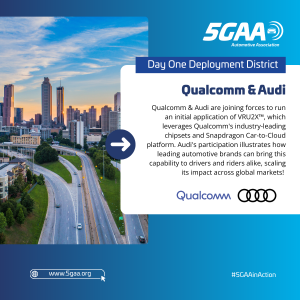


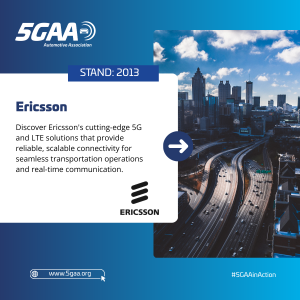
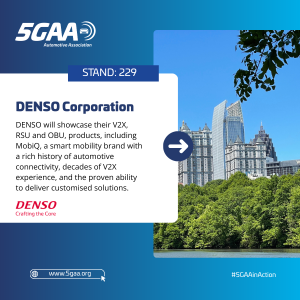

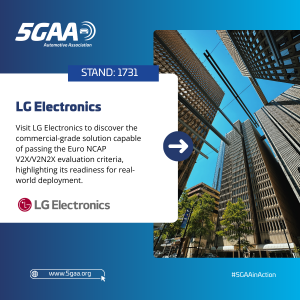
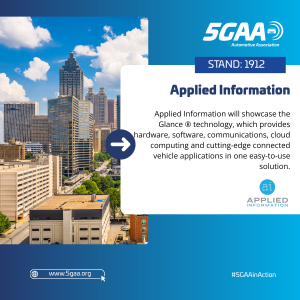
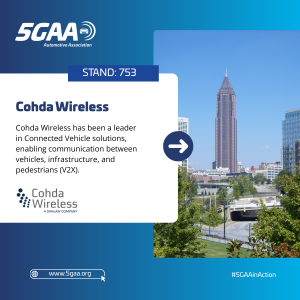
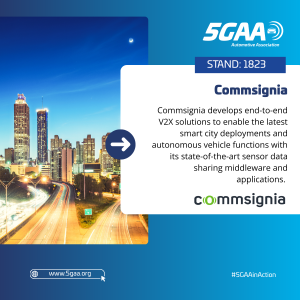

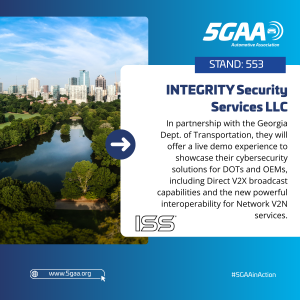
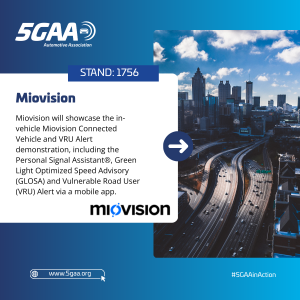
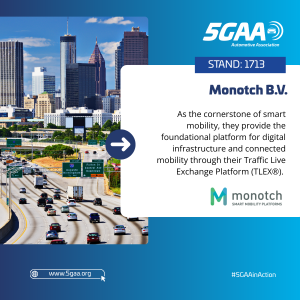

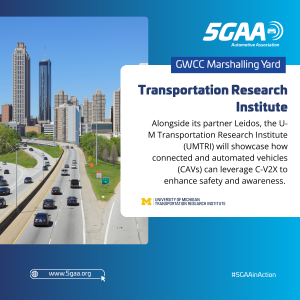
For more information, please contact marcom@5gaa.org
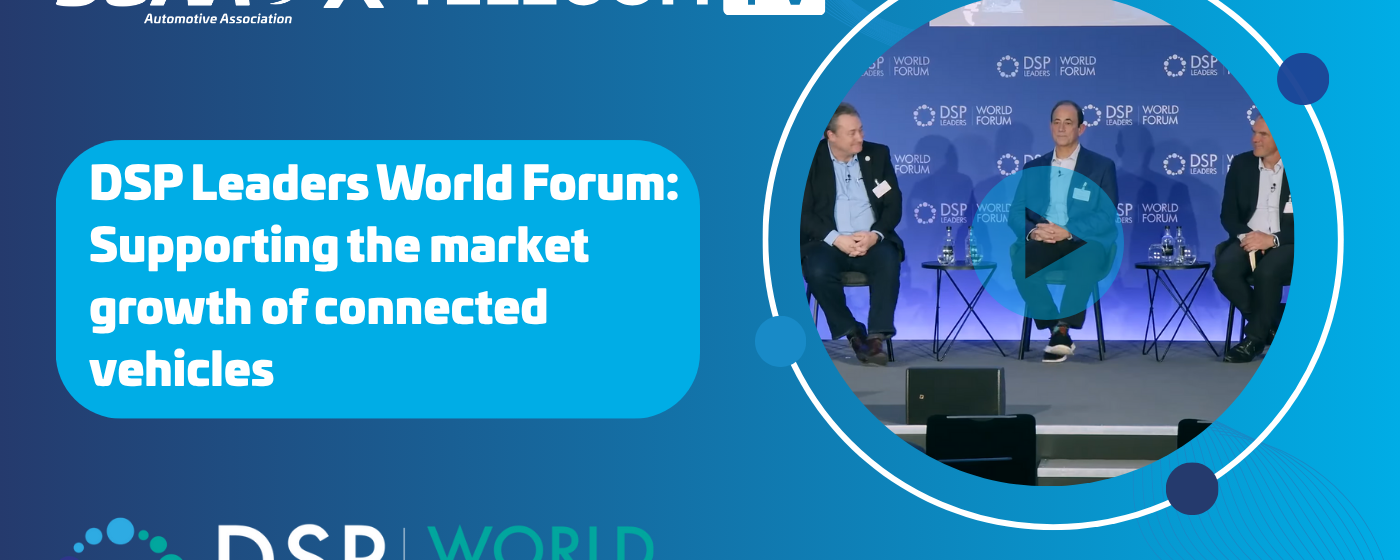
DSP Leaders World Forum: Supporting the market growth of connected vehicles
In this cross-industry panel discussion of TelecomTV’s DSP Leaders World Forum, leaders from Jaguar Land Rover, Wind River and 5GAA explored how telcos and automotive OEMs can better align to support the growth of connected vehicles. From the rise of the software-defined vehicle to monetisation models, regulatory drivers and safety-critical connectivity, they look at the opportunities – and hurdles – to creating smarter, more responsive vehicles. With practical insights on APIs, over-the-air updates, digital twins and vehicle-to-everything (V2X), this debate revealed what it will take to make the connected car ecosystem truly work.
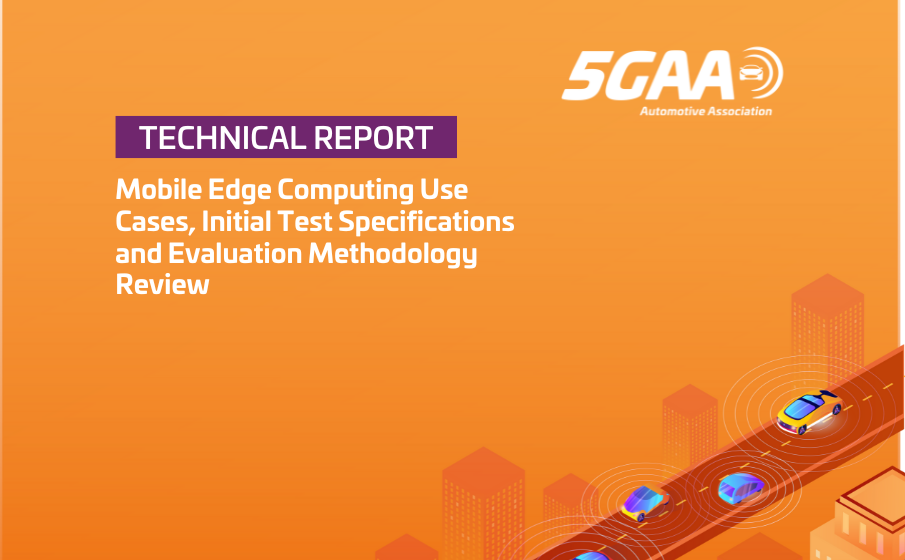
Mobile Edge Computing Use Cases, Initial Test Specifications and Evaluation Methodology Review
This second Technical Report (TR) edition provides an updated set of Use Case requirements, and a new evaluation methodology review for deployment potential using Mobile Edge Computing (MEC) infra-structure. The work is based on Use Cases (UC) and requirements developed by 5G Automotive Association’s Work Group 1 (WG1) and other organisations, such as the European Telecommunications Standards Institute (ETSI) MEC and China’s IMT 2020 PG.
Down-selection and analysis of UCs are outlined in this TR according to different objectives and criteria, including the technology’s feasibility and demonstrated capabilities, its evaluated performance, its proven business potential, etc. For this, a vehicle Original Equipment Manufacturer (OEM) perspective on UCs is featured because the end application is consumed on the vehicle side. Additional requirements, such as end-to-end (E2E) security schemes, should also be considered.
The newly introduced evaluation methodology presented in this TR is examined through discussion of examples and best practices. The aim of this approach is to help OEM’s better evaluate how/when to deploy vehicle features on-board, in MEC, or in a central cloud. A discussion of the relevant criteria to be considered, and the related technical or business issues for these criteria, is given to guide the reader through the evaluation methodology.
Read and download the full report here.
The first version was published in July 2021, and can be found here.
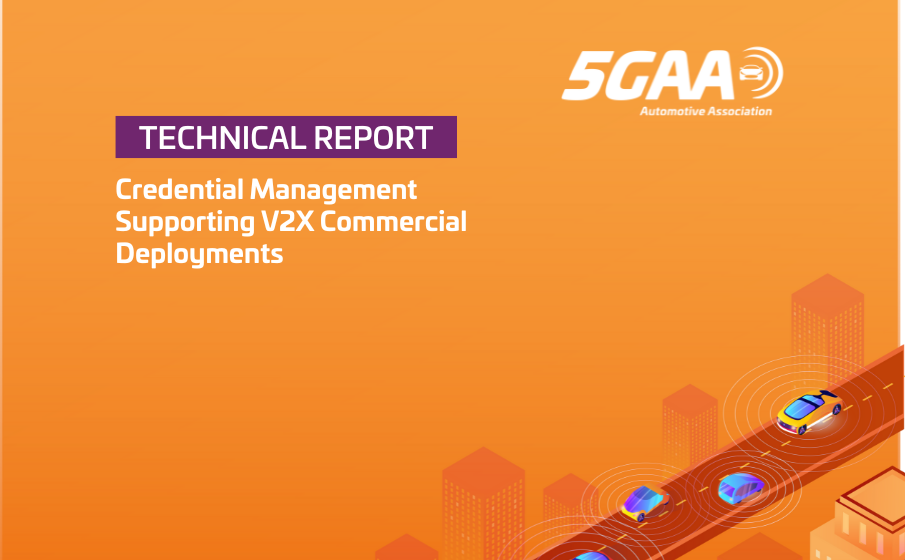
Credential Management Supporting V2X Commercial Deployments
Currently, for V2X direct communication, there is no available common policy (certificate policy for Public Key Infrastructure, or PKI, operators) for Security Credential Management System (SCMS) in the U.S. or Canada. A few SCMS providers created their own policies, which are not only incomplete but there are no published common policy documents feasible for SCMS PKI operation, hindering the widespread adoption of the technology. The Government of Canada sponsored an effort which resulted in a model for consideration.
A common Certificate Policy (CP) would help facilitate an ecosystem supporting interoperability and shared trust for V2X direct communication. The European Union addresses this issue by taking a central regulatory role, creating the CP, Security Policy (SP) and C-ITS Point of Contact (CPOC) documents that govern a V2X PKI for direct communication. North America need not duplicate what has been done elsewhere, though an accepted policy will build a greater ecosystem and support V2X direct deployment among a diverse set of automakers and other transport agencies.
The Certificate Policy Proposal contributing to this Work Item (WI) evolved into a Technical Report (TR) that develops a clear CP leveraging global best practices for security PKI and practical experience securing V2X direct communication, as well as common processes to facilitate an approach to SCMS.
For V2X mobile network communication, certificates are needed to authenticate interconnected backend systems and to protect communication between the systems. This Technical Report also elaborates on how to handle those certificates.
Download the Technical Report here.
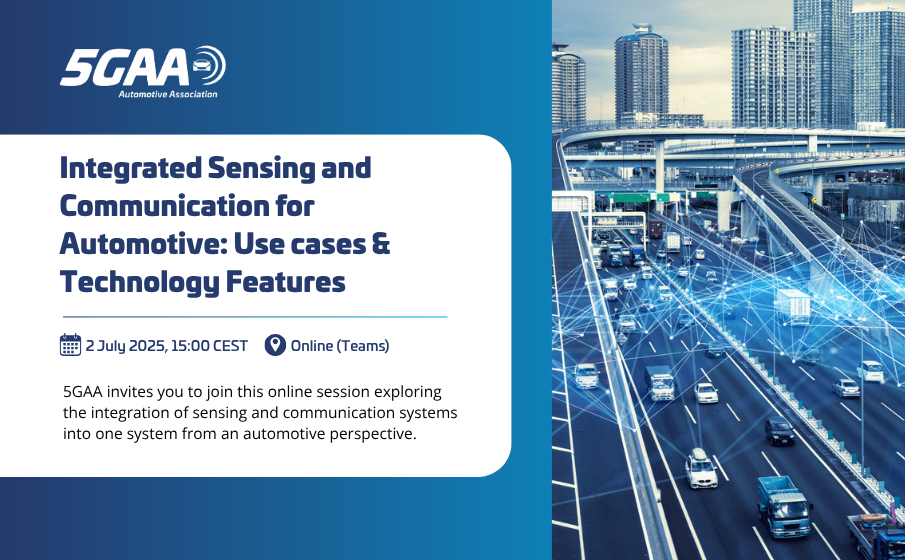
Integrated sensing and communication for automotive: Use cases & Technology Features
The 5G Automotive Association is organising the online session “Integrated sensing and communication for automotive: Use cases & Technology Features”.
Date & Time: Wednesday, 2 July 2025 | 15:00 – 16:00 CEST
Location: Online (Teams)
Join 5GAA and industry experts for an online session exploring the integration of sensing and communication systems into one system from an automotive perspective, as outlined in the 5GAA work item “Study on integrated sensing and communication (ISAC) for C-V2X application”
If you are interested, you can register here.
Experts from Huawei, Continental, and Qualcomm will present to participants critical aspects such as:
- Objectives and scope of ISAC in the automotive sector
- Insights into current ISAC use cases and their sensing requirements
- Emerging ISAC technologies and their potential for future vehicle platforms
If you are interested, you can register here.
Meet the Speakers
- Moderator: Maxime Flament, 5GAA CTO
- José Mauricio Perdomo Zelaya (Huawei)
- David Gonzalez Gonzalez (Continental)
- Shuanshuan Wu (Qualcomm)
Agenda
- Introduction – 5GAA/ISAC WI Maxime Flament
- Problem Statement, Objectives & Scope – José Mauricio Perdomo Zelaya (Huawei)
- ISAC Concept – David Gonzalez Gonzalez (Continental)
- ISAC Use Cases and Sensing SLRs – José Mauricio Perdomo Zelaya (Huawei)
- ISAC Technology Features and Implementation Considerations for Automotive
- ISAC Technology Features and Complementary Components David Gonzalez Gonzalez (Continental)
- ISAC Integration Levels – José Mauricio Perdomo Zelaya (Huawei)
- ISAC Technical Considerations for Automotive – Shuanshuan Wu (Qualcomm)
- Q&A
Register here.
For more information, please contact marcom@5gaa.org

V2N2X security, privacy, and data quality
Cellular Vehicle-to-Everything, or C-V2X, is an umbrella term that encompasses all 3GPP V2X technologies, including both direct (PC5) and mobile network communications (Uu). In many cases, both direct and network modes of C-V2X can be used for the same or similar automotive and Intelligent Transport System (ITS) applications, yet with different service characteristics. However, there are fundamental differences when it comes to the architecture and realisation of different Use Cases applying mobile network vs. direct, short-range, communications. This leads to different ways of handling security, privacy, and how to ensure data quality – the fundamental requirements of every ITS service – when using C-V2X mobile network communication or direct communication. This is already reflected in other organisations such as ITS America.
This 5GAA paper provides an overview of how security, privacy, and data quality are addressed for C-V2X using mobile network and backend communications, also known as Vehicle-to-Network-to-Everything (V2N2X) solutions.
The paper was originally published in December 2024. The current downloadable version is the updated edition, released on 3 June 2025. 5GAA remains committed to keeping all its publications accurate and up to date.


